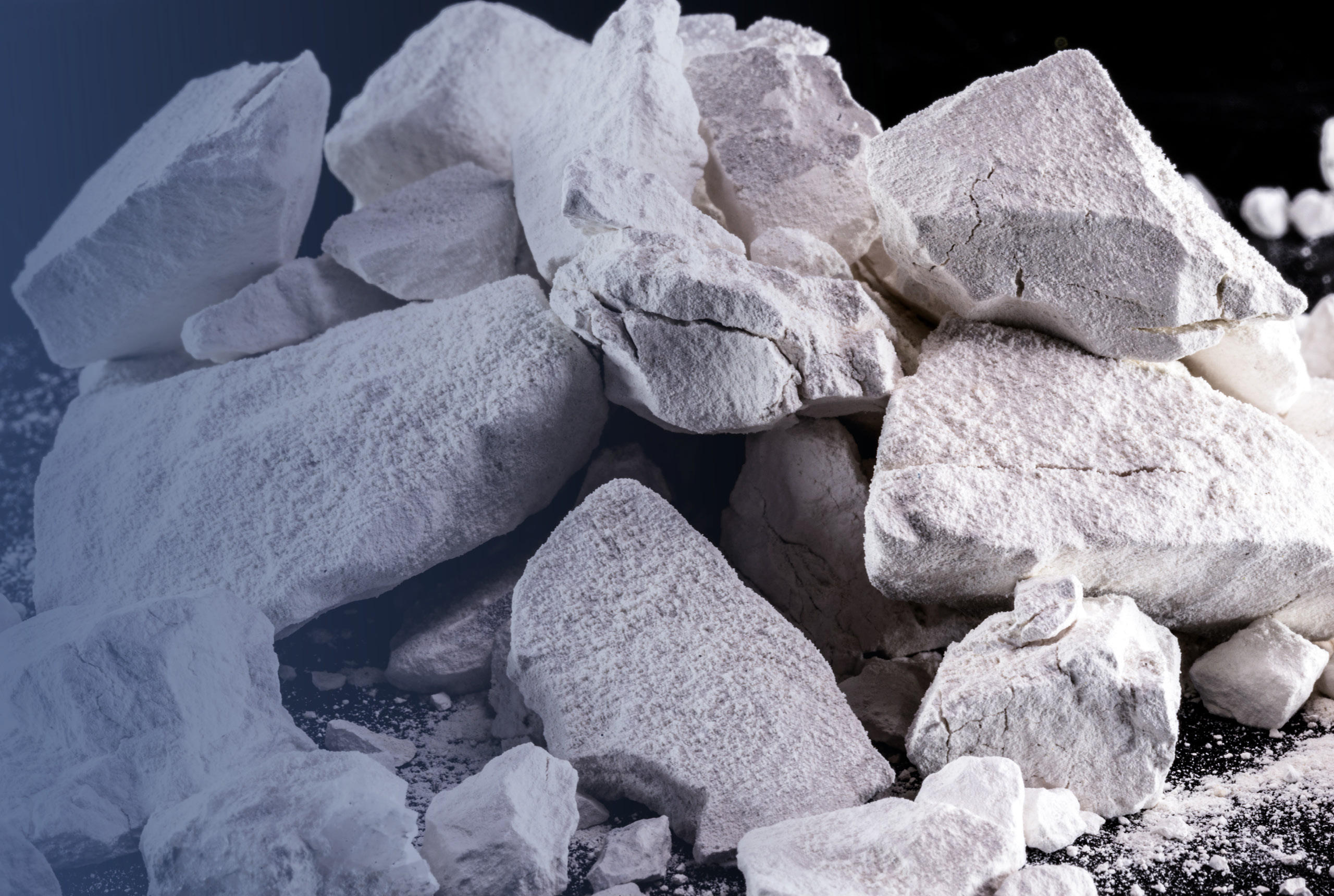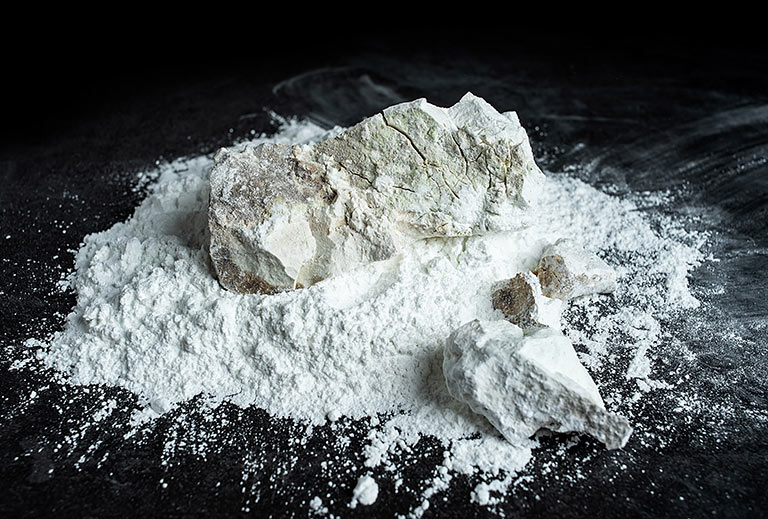
MATERIAL ANALYTICS IN THE AREA
Lime
Lime is used in various quantities and forms during iron extraction and steel production. Quicklime, hydrated lime, and limestone powder are applied in the blast furnace process. Here, lime converts the byproducts of ore into a fluid slag in which the mineral impurities of the ore and coke are bound.
Impurities in pig iron such as silicon, phosphorus, carbon, or sulfur are removed or bound during steel production using quicklime.
Due to the importance of lime in the steel industry, its purity must be very high.

Analyzing the lime in slag provides insights into the melting processes during steel production. The elements bound by lime in slag, such as sulfur and phosphorus, offer clues about the input materials used.
Lime in its highly pure form is also used in subsequent production steps, such as in pickling after steel production.
Besides purity, the grain structure and reactivity of lime are also important factors.

To assess the suitability and behavior of lime as a fertilizer or building material, the content of free lime is determined.
This is defined as CaO, Ca(OH)₂, and oxide phases with at least 95% CaO content.
The analysis is conducted via specific extraction using ICP, and the result is reported as CaO.

Since lime is both an essential additive and a byproduct or recyclable material, its analysis is of great importance. We offer a variety of analytical methods to characterize the chemical composition and mineral phases of your lime.
X-ray Fluorescence Analysis (XRF)
X-ray Diffraction Analysis (XRD)
ICP-OES
Combustion Analysis
For enquiries about these analyses, please contact our laboratory team at anfrage@industrial-lab.de or get in touch with your contact person:

Head of Team Inorganics
02762 9740 - 93
Send e-mail

Head of department
Inorganics / Sample Preparation
02762 9740 - 74
Send e-mail

Inorganics
02762 9740 - 85
Send e-mail
Calcium is a chemical element, while lime is a general term for various calcium compounds. Lime includes calcium carbonate (CaCO3), calcium oxide (CaO) and calcium hydroxide (Ca(OH)2), among others.
A simple determination of calcium in soil samples can be made by weighing the sample, adding hydrochloric acid and then measuring the resulting CO2. In water samples, the calcium content, also known as water hardness, is determined using, for example, titration, whereby the water hardness takes into account the sum of calcium and magnesium ions.
Chemical laboratories use numerous other methods to quantify the individual calcium compounds.
In soil samples, the lime content is determined by weighing the sample, adding hydrochloric acid and then measuring the CO2 produced (see DIN 18129).